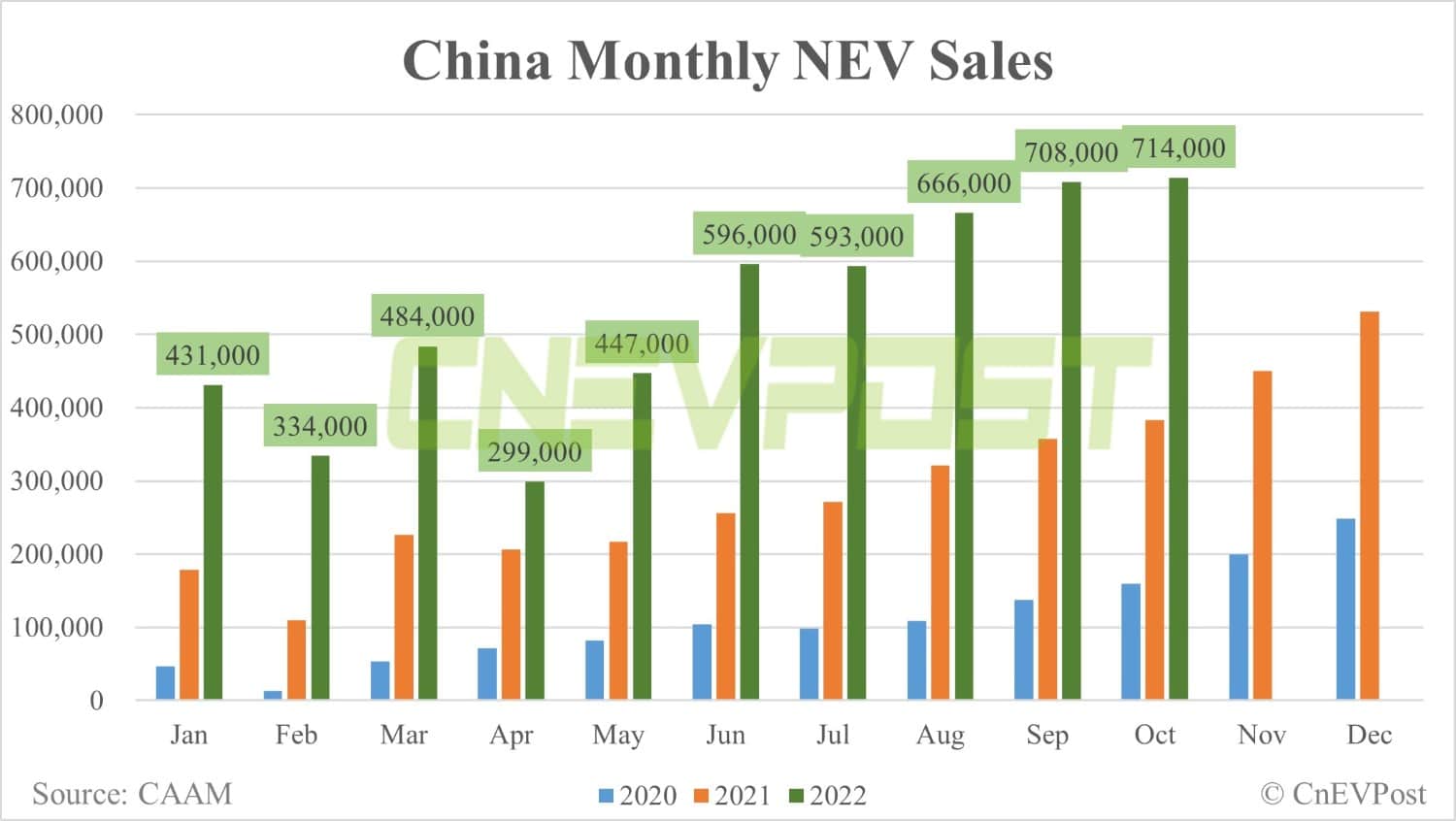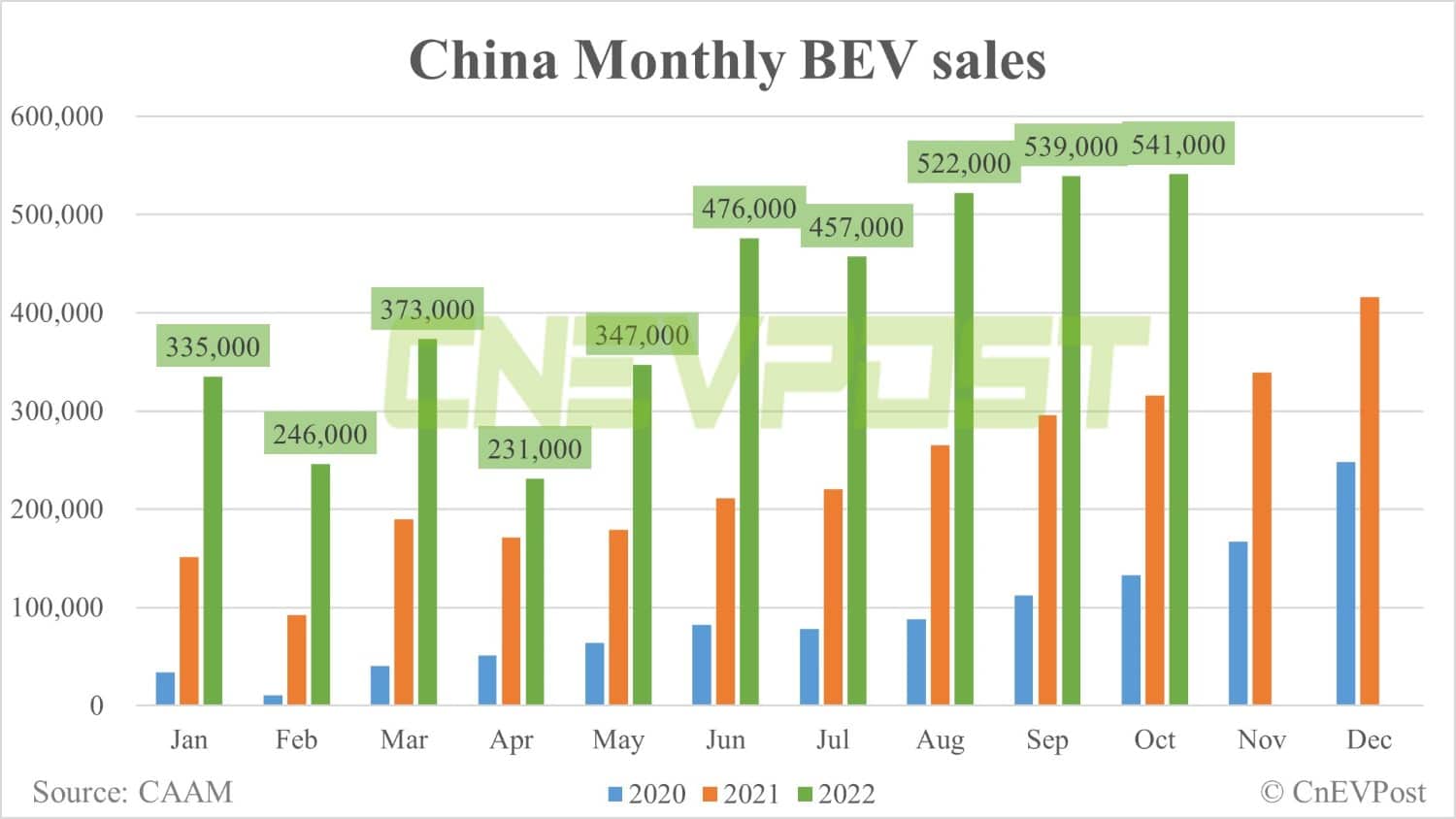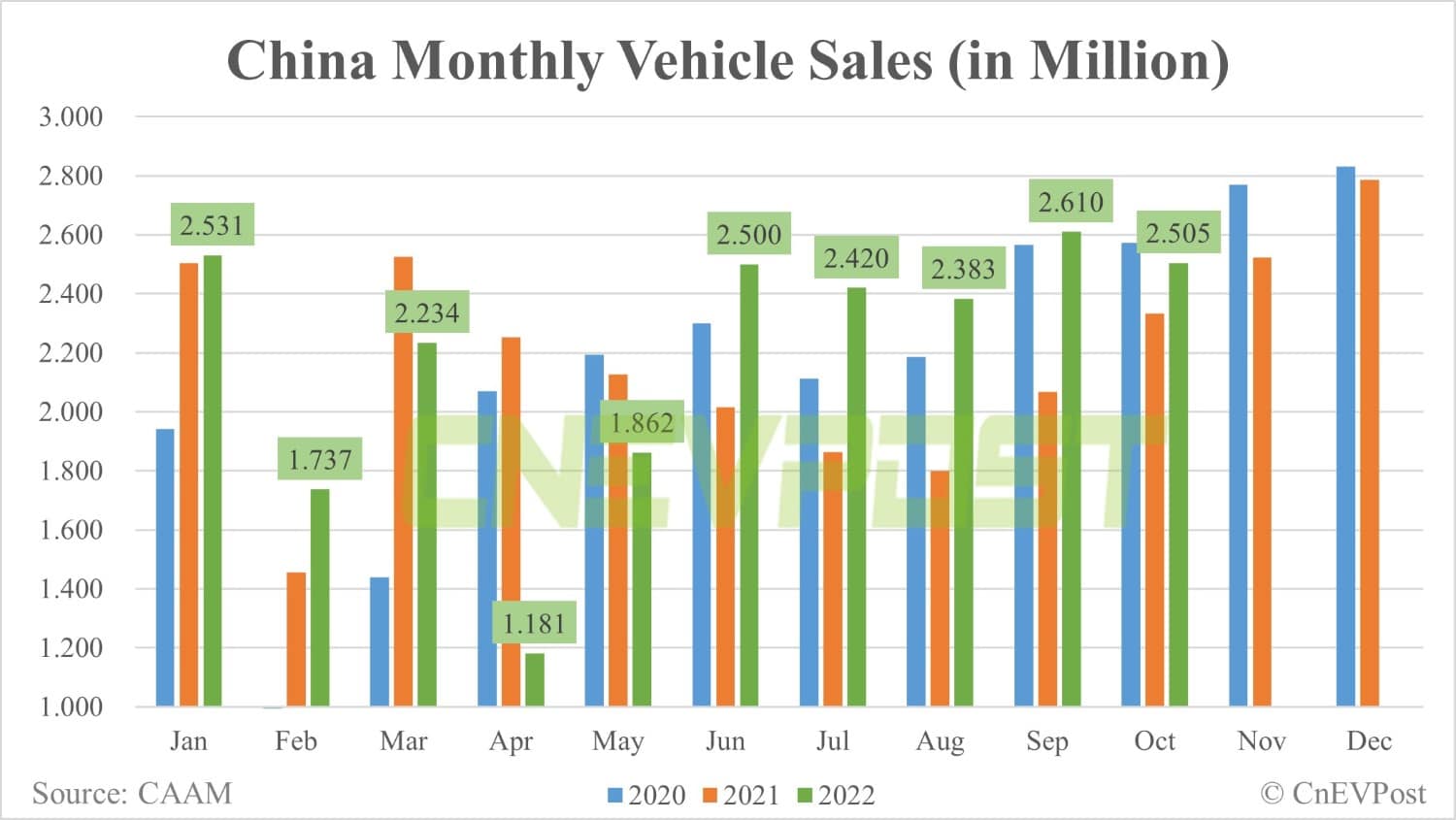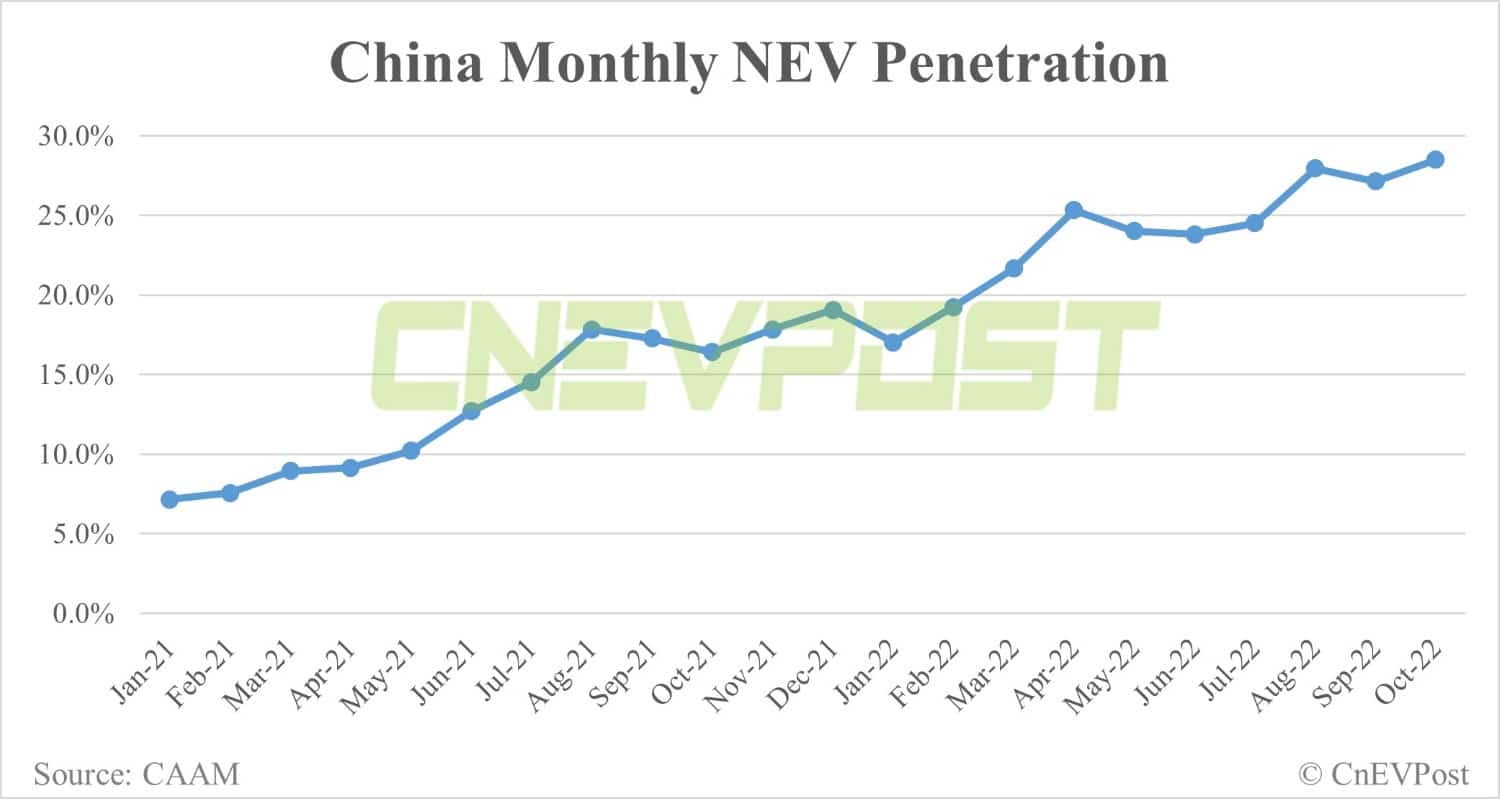China's auto industry is currently maintaining momentum in production and wholesale sales, but growth in the consumer market has been slightly sluggish, the CAAM said.
China's October new energy vehicle (NEV) sales rose 81.7 percent year-on-year to 714,000 units, surpassing September's 708,000 units and setting a new record high, according to data released today by the China Association of Automobile Manufacturers (CAAM).
The CAAM's figures are wholesale sales for vehicle companies, where NEVs include battery electric vehicles (BEVs), plug-in hybrid vehicles (PHEVs), and fuel cell vehicles.
BEV sales by automakers in China in October were 541,000 units, up 66.6 percent year-on-year; PHEV sales were 172,000 units, up 150 percent year-on-year; and fuel cell vehicle sales were 300 units, up 540 percent year-on-year, according to the CAAM.
Sales of all vehicles were 2.505 million in October, up 6.9 percent year-on-year and down 4 percent from September.
This means that the penetration of NEVs in China was a record 28.5 percent in October, up from 27.9 percent in August.
From January to October, China's NEV sales were 5.28 million units, up 110 percent year-on-year. BEV sales were 4,119,000 units, up 93.1 percent year-on-year; PHEV sales were 1,159,000 units, up 170 percent year-on-year; and fuel cell sales were 2,400 units, up 150 percent year-on-year.
Total vehicle sales for the first 10 months were 21.975 million units, up 4.6 percent year-on-year.
This means that the penetration rate of NEVs in China was 24 percent from January to October.
In October, a record 337,000 vehicles were exported from China, up 12.3 percent from September and up 46 percent year-on-year.
Of these, 109,000 NEVs were exported in October, up 120 percent from September and 81.2 percent year-on-year, according to the CAAM.
China's auto industry is currently maintaining momentum in production and wholesale sales, but growth in the consumer market has been slightly sluggish and inventory levels have increased, the CAAM said.
With uncertainty over the continuation of purchase tax incentives for traditional internal combustion engine vehicles next year, and subsidies for NEVs set to be withdrawn by the end of the year, along with a sharp rise in raw material prices for power batteries, there is uncertainty about car companies' expectations for the market, the CAAM said.
This adds to the difficulty for car companies in making production and business plans for next year and requires guidance from policymakers, the CAAM said.




